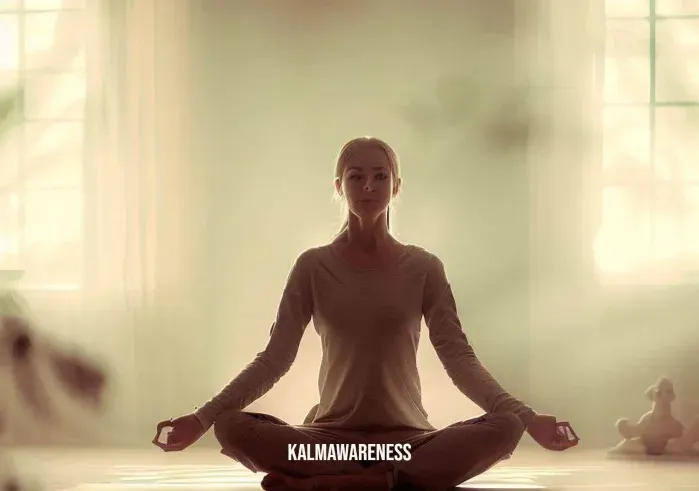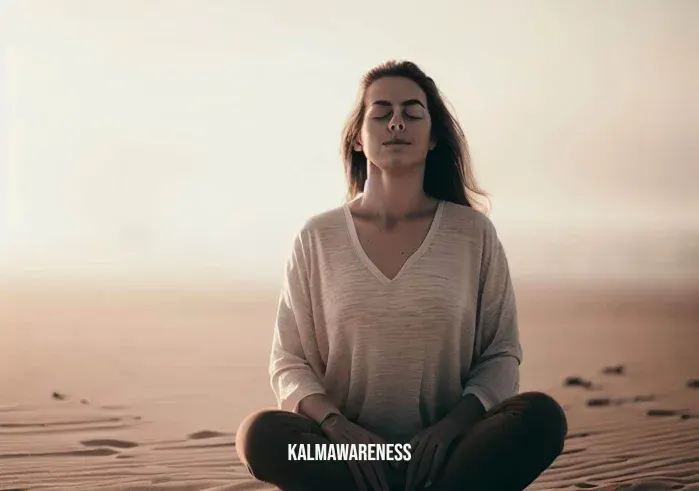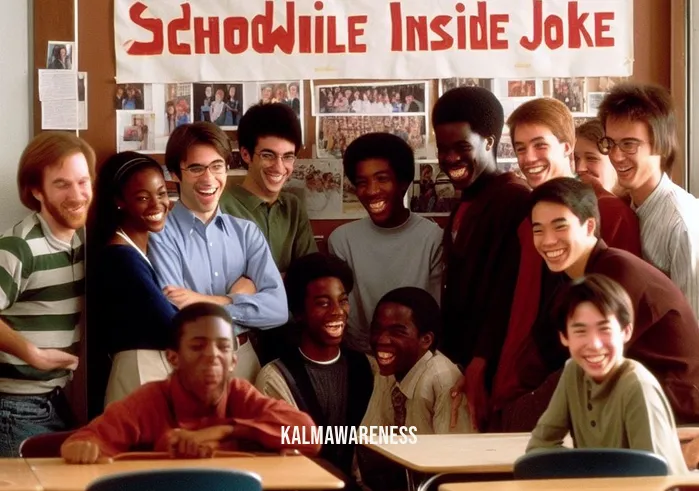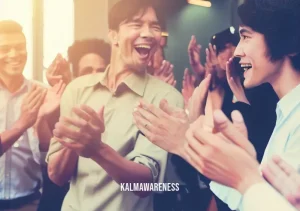A Comprehensive Guide to Settling In: Embrace Relaxation, Comfort, and Personal Growth
Settling in – a simple phrase but an incredibly profound experience. It’s about adaptation, contentment, and making a shift to create comfort in the unfamiliar. Whether you’re transitioning to a new city, job, lifestyle, or even a fresh mindset, the act of settling in can be a transformative journey towards personal growth.
I. Embrace the Journey: Understanding the Process to Settle In
When we think about settling in, it’s often intertwined with the concept of change. It’s about learning how to adapt, establishing a sense of comfort, and cultivating contentment.
Adaptation: The First Step in Settling In
To adapt, you need to embrace the unfamiliar, break out of your comfort zone, and explore new grounds with an open mind. It’s about making peace with the fact that life, as you know it, is shifting and that’s perfectly alright. It’s like being a baby, experiencing everything for the first time.
Adaptation doesn’t come easily, but with time, you start to find your rhythm in the new environment or situation. You become comfortable, at ease. In essence, you start to feel at home.
Creating Comfort in the Midst of Change
Comfort is a feeling of physical or psychological ease. It’s about feeling warm during meditation or sitting comfortably on your favorite gomden cushion during a deep meditative session. It’s the small things that make you feel, well, at home.
That said, comfort can be subjective. It’s different for everyone. What’s comfortable for one might not be for another. Some might find comfort in wearing mindfulness clothing while others might seek it in practicing Christian yoga nidra. Therefore, it’s crucial to identify what brings comfort to you personally.
Cultivating Contentment: The Key to Peaceful Living
Contentment is the state of being satisfied, a profound happiness that stems from the appreciation of what you have rather than desiring what you don’t. As they say, gratitude helps you see what’s there instead of what isn’t. It’s about accepting the present moment and finding joy in it.
The journey of settling in is as exciting as it is rewarding. It tests your resilience and patience, but it also allows you to discover new facets of yourself. Are you ready to dive deeper into this transformative journey? In the next part of this article, we will explore how you can consciously embrace the process of settling in using various mindful practices. Stay tuned!

Conscious Settlement: Practical Techniques to Ease the Process of Settling In
Now that we’ve understood the essence of settling in, let’s dive into the practical side of things. Here, we will delve into methods and techniques that can aid your journey, focusing on mindfulness, relaxation, and adjustment.
Mindfulness: Grounding Yourself in the Now
In our quest to settle in, mindfulness plays a key role. It’s about being present, experiencing every moment fully and without judgment. There are many ways to practice mindfulness:
- Meditation: It’s a fantastic tool that can help you focus your attention on the present moment. Whether you prefer a 20-minute guided meditation or a 7-minute chakra tune-up, the goal remains the same – to calm your mind and tune into the present.
- Breath Awareness: Breathing exercises can help center your mind. Simply find your breath and focus on it. Feel the air entering and leaving your body, grounding you in the here and now.
- Mindful Movements: Be aware of every movement your body makes. This could be during yoga, tai chi, or even simple daily activities like walking or eating.
Relaxation: Releasing Tensions to Settle In Better
Transition periods can often bring about stress and tension. But it’s crucial to find ways to relax and ease these pressures. Here are a few ways to incorporate relaxation into your settling-in journey:
- Meditative Sleep: Techniques such as the Amethyst guided sleep meditation can help you achieve a deep and restful sleep, reducing stress and promoting a sense of calm.
- Sound Baths: Sound has profound effects on our bodies and minds. Using tools like chakra sound baths, you can achieve a state of deep relaxation and balance your energy centers.
- Nature and Environment: Spending time in nature or creating a soothing environment at home with calming music or fragrances can significantly aid relaxation.
Adjustment: Making the New Familiar
The final piece of the settling-in puzzle is adjustment. It’s about making necessary changes to accommodate the new situation or environment. Here’s how you can facilitate this process:
- Creating Routine: Establishing a daily or weekly routine can provide a sense of structure and familiarity, helping you adjust quicker.
- Healthy Habits: This could involve maintaining a healthy diet, getting enough sleep, or dedicating time to exercise.
- Embracing Changes: Accepting that things will be different is a significant part of adjustment. It’s about embracing the uneasy flounder that comes with change and viewing it as an opportunity for growth.
To sum up, let’s look at the table below:
| Technique | Example Practices | |
|---|---|---|
| 1 | Mindfulness | Meditation, Breath Awareness, Mindful Movements |
| 2 | Relaxation | Meditative Sleep, Sound Baths, Nature and Environment |
| 3 | Adjustment | Creating Routine, Healthy Habits, Embracing Changes |
We’ve covered quite a bit about the practical techniques to ease the process of settling in. However, the journey doesn’t end here. In the next chapter, we’ll explore how to navigate the potential obstacles that might arise during this process and ways to overcome them. Looking forward to seeing you in the next part of this comprehensive guide!

Obstacles and Overcoming Them: Navigating Challenges on the Path to Settle In
While the journey to settle in is incredibly rewarding, it’s rarely a straightforward path. As Leonardo Da Vinci said, “Obstacles cannot crush me. Every obstacle yields to stern resolve.” Understanding the potential roadblocks can help us to better navigate our way. Let’s explore some common obstacles you might encounter and strategies to overcome them.
Physical Discomfort
When trying to settle in, especially during meditation or mindfulness practices, you might encounter some physical discomforts. These could include itching during meditation or even feeling cold. As actor Anthony J. D’Angelo observes, “Treasure your relationships, not your possessions.” So, the key here is to listen to your body, adjust your practices to meet its needs, and not be too attached to any particular method or position.
Mental Distractions
In our fast-paced world, finding calm can be a challenge. We’re constantly bombarded with information and distractions that can make it harder to settle in. Albert Einstein, the renowned physicist, once said, “Any man who can drive safely while kissing a pretty girl is simply not giving the kiss the attention it deserves.” This quote illustrates the importance of focus and concentration. Try shifting your focus to meditation and see how it helps you tune out distractions.
Resistance to Change
As we try to settle into a new situation or environment, we may face resistance within ourselves. This resistance often stems from fear of the unknown or attachment to past habits and routines. Steve Maraboli, a motivational speaker, reminds us that “Incredible change happens in your life when you decide to take control of what you do have power over instead of craving control over what you don’t.” Recognizing this resistance and navigating these transitions with grace and acceptance is an essential part of the settling-in process.
Lack of Patience
Settling in takes time. It’s not a race, but a journey to be savored. However, in our eagerness to settle in, we might get impatient and rush the process. As the iconic Benjamin Franklin once stated, “He that can have patience can have what he will.” Remember, it’s a calming notion to know that patience is key. It takes time to adjust, and that’s perfectly okay.
As we close this chapter, let’s keep in mind these wise words from author Roy T. Bennett: “Don’t be pushed around by the fears in your mind. Be led by the dreams in your heart.” Remember, every obstacle is a stepping stone to success.
In the next chapter, we’ll be exploring the concept of “settling in” from the perspective of different cultures around the world. It promises to be a fascinating journey, so make sure to join us!

Embracing Cultures: The Art of Settling In Across the Globe
Every culture has its unique take on the concept of settling in. By understanding these different perspectives, we can gain more insight into the multifaceted nature of this journey. To borrow the words of Maya Angelou, “In diversity there is beauty and there is strength.”
The Zen Philosophy of Japan
In Japan, Zen philosophy guides the process of settling in. They emphasize mindfulness and the state of being present in the moment. There’s a beautiful proverb, “Fall seven times, stand up eight,” which inspires perseverance and resilience in the face of adversity. To truly settle in, one might consider applying the Sitback method, which echoes the Zen principles of mindfulness.
Hygge – The Danish Way
In Denmark, the concept of “Hygge” encapsulates their approach to settling in. It’s about creating a warm, cozy atmosphere and enjoying the good things in life with good people. The idea is to find your bliss and contentment, which is also what blissful meditation can help achieve.
The American Dream
The American Dream has always been synonymous with the idea of settling in. It’s about freedom, equality, and the opportunity for a prosperous and successful life. As Henry David Thoreau once wrote, “Go confidently in the direction of your dreams. Live the life you’ve imagined.” And when life becomes a little too much, taking some time out for a 20-minute meditation can provide the needed balance.
| Culture | Concept of Settling In | Cultural Practice |
|---|---|---|
| Japan | Embracing Zen Philosophy | Practicing Sitback method |
| Denmark | Following Hygge | Engaging in blissful meditation |
| United States | Chasing the American Dream | Balancing life with 20-minute meditation |
In the wise words of Confucius, “It does not matter how slowly you go as long as you do not stop.” Settling in is a journey that comes with its unique challenges, but the rewards are priceless.
As we transition into our final chapter, we’ll discuss how to maintain the feeling of being settled in. A journey of peace, tranquility, and contentment awaits, so don’t miss it!
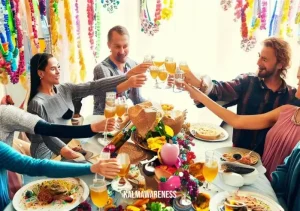
The Art of Maintaining the State of Being Settled In
You have mastered the art of settling in, but how can you maintain this beautiful state of comfort, contentment, and serenity? Let us explore this significant aspect of your journey.
Maintain a Practice of Mindfulness
Mindfulness allows us to stay connected with our present reality. It instills a sense of contentment and peace, as it allows us to live in the moment, embracing it wholly. Let’s consider the practice of mindful dressing, for instance. Selecting mindfulness clothing could be a great way to embrace this practice, creating a calm aura around us.
Keep Learning and Growing
As humans, our capacity to learn and grow is infinite. Engaging in new experiences, acquiring knowledge, and developing skills help us maintain a sense of fulfillment and contentment. Our Personal Growth cluster can provide you with excellent resources to aid your growth journey.
Cultivate Gratitude
Being grateful for what we have, instead of longing for what we lack, can help us maintain a state of contentment. You can develop the habit of gratitude by recognizing the good in your life. The art of cultivating gratitude can be incredibly helpful in preserving your sense of comfort and belonging.
Create a Comfortable Space
The spaces we inhabit can significantly impact our mood and well-being. A comfortable and personalized space can contribute to maintaining our settled-in feeling. You could consider adding a gomden cushion to your space for extra comfort during your moments of reflection and meditation.
Listen to Your Body
Our bodies often communicate with us. For example, feeling cold during meditation might be your body telling you something. Learn about feeling cold during meditation and listen to what your body has to say.
Tips for Maintaining the State of Being Settled In:
- Maintain a Practice of Mindfulness: Embrace practices like wearing mindfulness clothing.
- Keep Learning and Growing: Explore our Personal Growth cluster.
- Cultivate Gratitude: Learn the art of cultivating gratitude.
- Create a Comfortable Space: Add items like a gomden cushion to your space.
- Listen to Your Body: Understand signs like feeling cold during meditation.
The process of settling in doesn’t end at finding comfort; maintaining it is equally important. It’s an ongoing journey that continually transforms us, leading us towards a fulfilling life. Remember, in this quest, you are not alone. Our community at KalmAwareness is here to support you every step of the way.
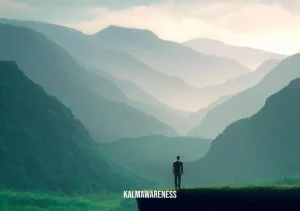
VI. The Art of Mindfulness and the Journey Beyond
Now that you are well on your path to settling in, it’s time to acknowledge that the journey doesn’t end here. It’s a perpetual cycle of growth, adaptation, and understanding. Let’s ponder on the lessons we’ve learned and take a peek into what lies beyond.
Navigating Through Life’s Transitions
Life never ceases to surprise us with its constant change. The key is to remain anchored within ourselves during these transitions. Navigating through life’s transitions becomes easier when we’re rooted in our mindfulness practice. Check out these thoughts on navigating transitions.
Embrace the Uneasiness
Sometimes, settling in can make us feel uneasy, as if we’re floundering without a concrete direction. We need to embrace this uneasiness as an inherent part of our journey. This uneasy flounder piece can provide some helpful insight.
Cultivating Comfort in Chaos
Sometimes, amidst the hustle and bustle of life, we struggle to find peace. But it is possible to be ‘always comfortable’ regardless of the circumstances. Explore how to always be comfortable, even amidst chaos.
Building a Community
Finally, it’s crucial to understand that this journey is not solitary. It’s a shared experience, and building a community can immensely benefit everyone involved. Consider engaging with the Family Circle community and learning how to meditate as a family.
Key Takeaways:
- Navigating Through Life’s Transitions: Learn to navigate transitions.
- Embrace the Uneasiness: Embrace the uneasy flounder as part of the journey.
- Cultivating Comfort in Chaos: Understand how to be comfortable in any situation.
- Building a Community: Engage with our Family Circle and meditate as a family.
In this journey of learning how to settle in, always remember that the journey itself is the destination. We’ve only just begun, and there’s so much more to discover, understand, and experience. I wish you success in your continued journey. Stay connected with KalmAwareness for more resources, support, and shared wisdom. Remember, we’re in this journey together, one mindful moment at a time.
